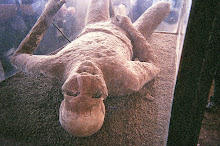
Halloween is many a child's favorite holiday. But, did you ever guess that Halloween came from the Celtic holiday of Samhain? Well, it's true. The Celts, barbarians they may have been, invented one of the most popular holidays in the world with some help from the Druids.
The Druids lived in the British Isles and were made a priestly order by the occupying Celts. We, unfortunately, only know so much about the Druids because they did not write anything down. The students of the Druids were expected to memorize what they were taught without writing it down. We know this much because Irish and Scottish folklore is based on some of the Druidic oral tradition. The Celts sent students to the Druids to be educated.
With the Celts and later the Christians, the holiday of Samhain, translated "summer's end", evolved into Halloween. The Christianized samhain became Hallowmas, or All Saints Day and the night before or the eve was called "All Hallows Eve," or All Soul's Day. This was the day to pray for the dead.
Here's the good part, Julius Caesar spent two summers trying to conquer Britain. The Romans were interested in breaking up the legal and political power of the Druids. The Romans believed that writings about the Druids and Celts were heresy and found some of Druidic ritual intolerable. The Roman custom of religious tolerance when they conquered a region did not include the Druids.
Finally, to answer the original question, "Did the Romans Celebrate Halloween?" The short answer is, no. However, the ancestors of these early Christians, Romans, Celts, and Druids in the British Isles were responsible for bringing this pagan/Christian holiday to the modern world.












